Ticks on Dogs: How to get through Tick Season Safely
Warm weather and spending time in nature often bring along one tiny creature that is a serious worry—ticks. Feeding on blood to survive, ticks often hitch a ride on dogs happily sniffing in the bushes. Today’s article discusses ticks: what threats tick bites pose and how to avoid them.
Ticks
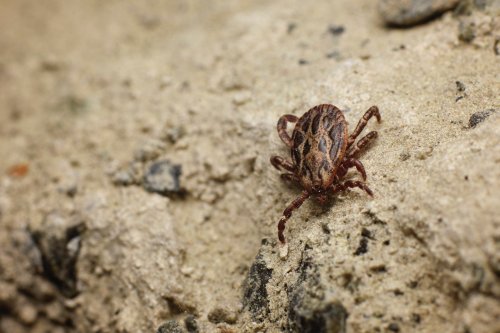
Ticks are tiny parasites that, at first glance, look a little like spiders. However, they are a different type of arachnid. Ticks are generally unwanted pests that survive by feeding on the blood of other living beings. They have a broad range of hosts, including rodents, bandicoots, macropods, wombats, and koalas and can be a common problem for humans and dogs.
Ticks usually live in tall grasses and low bushes, avoiding direct sunlight and waiting for a mammal to come by to latch onto it. Since a tick bite is usually painless, the host is often unaware that it has become someone's food. However, it's essential to try and avoid ticks, as they can be dangerous; some species inject a toxin than can cause paralysis, while others can be carriers of diseases or causes of allergic reactions.
That’s why performing a tick check for your dog and yourself during and after your stay in nature is essential.
Characteristics
Tick Species
Tick species are usually specific to certain geographical areas. So, for example, there are about 70 varieties of ticks in Australia. At the same time, the American Kennel Club warns that as many as 200 different types of ticks can be found in America.
In Australia, most tick bites come from Ixodes holocyclus, sometimes called the grass tick, seed tick or bush tick. The adults are grey-blue and can be approximately 1 cm long.
Stages of Life
In 2015, a group of scientists studied the development of ticks from eggs to adults and their adaptation to external conditions. The Ixodes holocyclus, the most common Australian tick, was described as having four life-cycle stages: egg, larvae, nymph and adult. While the larvae are brown and only 1mm long, as mentioned, the adults are blue-grey and one centimetre in size.
Living Environment
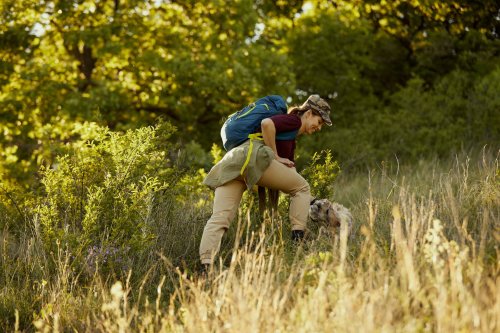
In an article published in the Veterinary Journal, a group of scientists observed the weather affecting the distribution of ticks, that is, the frequency of occurrence of diseases caused by ticks. They discovered that tick paralysis, a disease that can occur in dogs from a tick bite, is more common if there were heavy rains in a specific geographical area 6-10 months before. The study concluded that moisture favours the survival of eggs and larvae, which results in an increased tick-infested area later that year and, consequently, an increased number of infections transmitted by ticks to dogs.
When not clinging to their host to feed on blood, the typical environments ticks are found in include grasses and low vegetation (bushes). These environments allow the most significant chance that a person or an animal will come across, brush against a leaf where ticks are waiting, ready to catch and start their meal.
What are the Risks of Tick Bites?

The tick-borne illnesses differ from place to place or, most often, from continent to continent. Depending on your location, the consequences of a tick bite can range from a minor irritation right through to a life-threatening event. It’s important to conduct tick checks regularly, and if you find any ticks on your dog, they should be removed as soon as possible. Since they feed on blood, ticks can readily transmit disease.
Lyme Disease
Lyme disease is one of the diseases transmitted by ticks, but it is not considered a big risk in Australia. The highest prevalence of this tick-borne disease is seen in North America, Europe and Asia.
Ian Wright, a veterinary surgeon, explains that the most common manifestation of this disease is shifting lameness. Still, since the other signs are often non-specific and subtle, it easily happens that the disease is not recognised in time. Some signs of Lyme disease are high fever, lethargy, and lameness. If left untreated, the disease can progress to chronic complications.
Tick Paralysis

A much greater threat to people and animals in the Australian territory is another disease transmitted by ticks—tick paralysis.
In the journal Veterinary Parasitology this disease is described as a serious and potentially fatal condition transmitted by two species of ticks, Ixodes holocyclus and Ixodes cornuatus. It usually manifests as a rapid ascending flaccid paralysis, while death most often occurs due to paralysis of the respiratory muscles.
In a study by a group of scientists whose work was published in the Veterinary Journal (2015), it was observed that most cases of tick paralysis occur during the spring months. Also, they noticed that the risk of this disease increases on the eastern coast of Australia.
How to Prevent Tick Bites
There are several ways that you can reduce the risks associated with tick bites and continue to enjoy your nature walks.
One of them is to use a tick collar. Containing active ingredients, usually imidacloprid and flumethrin, tick collars repel ticks from latching onto dogs. These collars have an active life, i.e. the period during which they are effective in tick control, after which they should be replaced.
Unlike collars that prevent ticks from biting a dog, tick medications kill ticks only after they bite. Although very effective, the disadvantage of this type of protection against ticks is that the insect will still bite into the dog's skin and, if infected, potentially cause an allergic reaction or other health problems.
There is a possibility that your dog will be sensitive to these preventatives, and you can consult with your veterinarian about possible other options. One of them is trying to avoid areas that ticks prefer to inhabit (tall grass, low vegetation). Also, check your dog (and yourself) after every outing to see if any ticks have caught on its skin or fur. Veterinary experts advise that the chances of infection are significantly reduced if you remove the tick within 24 hours of its bite.
How to Check Your Dog for Ticks
The sooner you remove the tick, the less chance your dog will get sick. Check your pet for ticks after they spend time outdoors, and preferably even more frequently—in case you missed an insect in the previous tick check.
Run your fingers through your dog's fur and pay attention to whether you feel any small bumps with your touch. Ticks prefer areas where the skin is softer, so pay special attention to the following parts:
In and around the ears
Around the eyelids
Under the collar
Under the front legs
Between the back legs
Between the toes
Around the tail
How to Remove a Tick
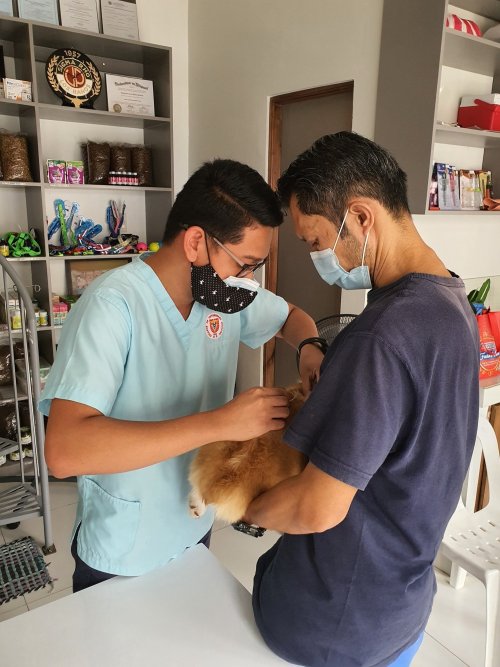
A tick consists of a one-piece body and protruding mouthparts. They grab hold of the host for feeding with their mouths, and their crab-like legs help them maintain balance and stronger adhesion to the skin. They can vary in size, but adult ticks are usually large enough to be seen with the naked eye. Before removing the tick, it is advisable first to kill it with an instant tick freeze spray.
Tools
You can remove the tick yourself with what you have at home, usually tweezers. It is better to use fine-point tweezers to avoid tearing the tick and leaving its parts caught in your dog's skin.
The best option would be to get a tick removal hook, especially if you live in an area where ticks are very prevalent. This tool is easy to use because you just put the prongs on either side of the tick and twist upwards.
The American Kennel Club warns that you should never try to remove a tick with your fingers alone, as squeezing will encourage additional injection of infected secretions into your dog’s body.
Procedure
How to remove ticks? Spread your dog's fur and grasp the tick with the hook or tweezers as close to the skin as possible. Very slowly and gently pull the tick upwards to avoid its mouth breaking off and getting caught in the dog's skin. After a while, the tick should give way, and you will pull it out.
After removing the tick wash your hands thoroughly, disinfect the bite site, and rinse the tweezers or hook with disinfectant. Keep the tick in a secure container in case your dog later becomes ill, as it will be used for identification.
Seeking (Immediate) Medical Attention
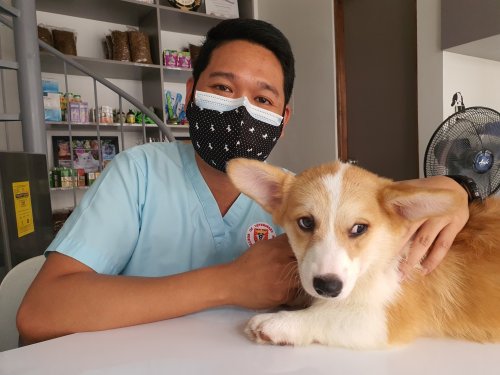
In Australia, with a high prevalence of paralysis ticks, it is advisable to seek veterinarian care early. If you notice any unusual signs in your dog, such as fever, lethargy, or weakness in hind limbs, get them to the Vet as soon as possible; they may have one or more ticks that haven't been found. In addition, the nurse may shave your dog's fur to help locate all the embedded ticks.
For areas that do not have paralysis ticks, it may not always be necessary to take your dog to the vet; remove the tick and call your local vet for the most current advice.
Canine Therapy for Tick Bites
Although Canine Therapy does not replace medical care, it is a good adjunctive treatment to help dogs after a tick bite has affected them. A holistic approach to canine health looks at all body systems, aiding the body with the natural ability to remove toxins and reduce the stress load on their bodies.
Canine Osteopathy is designed to restore the natural balance within the dog's internal systems; it is both therapeutic and restorative in nature. Suppose, however, the fascia has become adhered and restricted. In that case, many owners opt to use Canine Bowen Therapy to treat their dog, and those who find the illness associated with tick bites affect their dog's emotional well-being often seek the services of a WEBB practitioner.
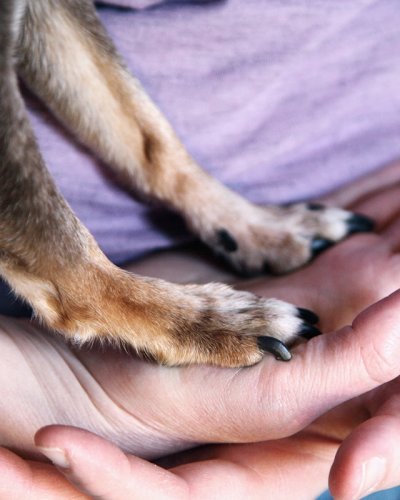




Leave a comment